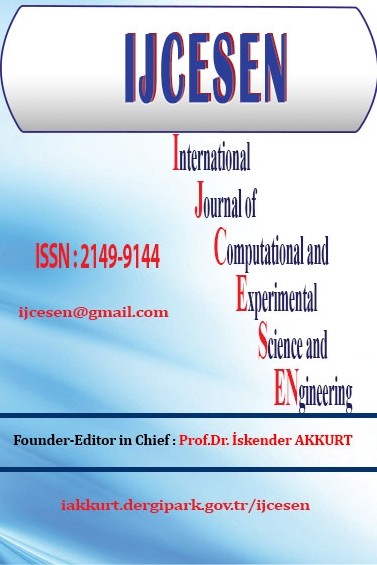Fracture Interaction during Temporarily Plugging Staged Fracturing
Fracture Interaction during Temporarily Plugging Staged Fracturing
Fracturing, XFEM, Propagation, Simulation,
___
- [1]Zhou, C., Wu, X., Li, H., Ren, Z., & Xin, Y. (2013). Influence of in-situ stress distribution on selection of fracturing fluid backflow technology. Value Engineering, 130(1), 347-351. DOI: 10.12693/APhysPolA.130.347 [2]Weddle, P., Griffin, L., & Pearson, C. M. (2017, January 24). Mining the Bakken: Driving Cluster Efficiency Higher Using Particulate Diverters. Society of Petroleum Engineers. DOI:10.2118/184828-MS [3] Belytschko, T., & Black, T. (1999). Elastic crack growth in finite elements with minimal remeshing. International Journal for Numerical Methods in Engineering, 45(5), 601-620. [4] Dahi Taleghani, A., & Olson, J. E. (2014). How natural fractures could affect hydraulic-fracture geometry. SPE journal, 19(01), 161-171. [5] Fries, T., & Baydoun, M. (2012). Crack propagation with the extended finite element method and a hybrid explicit–implicit crack description. International Journal for Numerical Methods in Engineering, 89(12), 1527-1558. [6] Haddad, M., & Sepehrnoori, K. (2016). XFEM-Based CZM for the Simulation of 3D Multiple-Cluster Hydraulic Fracturing in Quasi-Brittle Shale Formations. Rock Mechanics and Rock Engineering, 49(12), 4731-4748. [7] ÖÖ. Karaçal. (2016). Computational material analysis of structural and hemodynamic model of coronary stent by cfd/fea in computer aided mechanical engineering approach. Acta Physica Polonica, 130(1), 249-251. DOI: 10.12693/APhysPolA.130.249 [8]Y. Özcanli, Çavuş, F. K., & M. Beken. (2016). Comparison of mechanical properties and artificial neural networks modeling of pp/pet blends. Acta Physica Polonica, 130(1), 444-446. DOI: 10.12693/APhysPolA.130.444 [9] Weng, X., Kresse, O., Cohen, C.-E., Wu, R., & Gu, H. (2011, November 1). Modeling of Hydraulic-Fracture-Network Propagation in a Naturally Fractured Formation. Society of Petroleum Engineers. doi:10.2118/140253-PA [10] Wu, R., Kresse, O., Weng, X., Cohen, C.-E., & Gu, H. (2012, January 1). Modeling of Interaction of Hydraulic Fractures in Complex Fracture Networks. Society of Petroleum Engineers. doi:10.2118/152052-MS [11] Shahri, M. P., Huang, J., Smith, C., & Fragachán, F. E. (2017, August 28). Solid-Particulate Diverter Optimization: Coupling Perforation-Scale Particle Transport to Field-Scale Fracturing Simulation. American Rock Mechanics Association.
- Yayın Aralığı: 4
- Başlangıç: 2015
- Yayıncı: Prof.Dr. İskender Akkurt
Huseyin Ozan Tekin, Baris CAVLI, Elif Ebru ALTUNSOY, Tugba MANICI, Ceren OZTURK, Hakki Muammer KARAKAS
Big data Analysis in Plant Science and Machine Learning Tool Applications in Genomics and Proteomics
Jalil NOURMOHAMMADİ KHİARAK, Rana VALİZADEH-KAMRAN, Ahmad HEYDARİYAN, Najmeh DAMGHANİ
Exact Stochastic Sşmulation Algorithms and Impulses in Biological Systems
Derya ALTINTAN, Vilda PURUTÇUOĞLU
Fracture Interaction during Temporarily Plugging Staged Fracturing
Wang BO, Zhou FUJIAN, Hu JIA, Gao LIYANG, Yuan LISHAN, Wang YUE
A Project Management Model for Investigation of a Construction Project
Murat ÇOLAK, Şeyma KESİK, Utkan MUTMAN, Gülşen AYDIN KESKİN
Influence of Spinning Parameters on thin and thick Places of rotor spun yarns
Josphat MWASIAGI, Jacquirine MIREMBEL
Engineering Properties of Eğirdir-Kızıldağ Harzburgitic Peridotites in Southwestern Turkey
